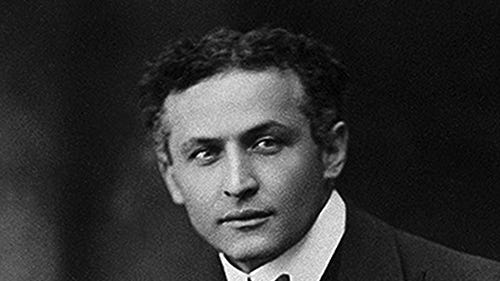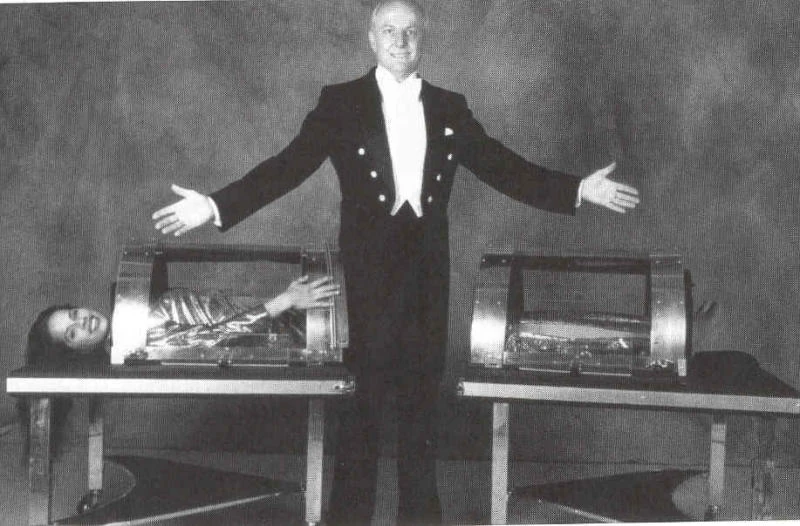P.C. Sorcar, known as the “Father of Modern Indian Magic,” was a legendary magician whose mesmerizing performances captivated audiences worldwide. Born Protul Chandra Sorcar on February 23, 1913, in Ashekpur, Tangail, Bangladesh, he redefined Indian magic with his iconic Indrajal show during the 1950s and 1960s. This article explores Sorcar’s age, net worth, married life, height, weight, salary, dating history, and his lasting impact on global magic. Discover his journey from a small village to international stardom, enriched with new insights and personal reflections on his cultural significance.
Early Life and Education: The Roots of a Magical Journey
P.C. Sorcar, born in 1913, grew up in a middle-class family in Bengal, now Bangladesh. His fascination with magic began early, sparked by his family’s seven-generation legacy of magicians. At Shibnath High School, he excelled in mathematics, a skill that later influenced his precise stage illusions. Under the mentorship of Ganapati Chakraborty, Sorcar honed his craft, performing for classmates with simple tricks. By 1933, he graduated with honors in mathematics from Amanda Mohan College, but chose magic over an engineering career, a bold decision reflecting his passion. His height and weight are not well-documented, but his commanding stage presence made him larger than life.
Rise to Fame: The Indrajal Show and Global Acclaim
Sorcar’s Indrajal show, a blend of Indian mysticism and modern showmanship, catapulted him to fame in the mid-1930s. Performing in Kolkata and Japan, he broke stereotypes about Indian magicians, often dismissed as crude by Western audiences. His elaborate stage setups, resembling the Taj Mahal, and vibrant costumes, like his Maharaja robe, captivated audiences. By the 1950s, Sorcar’s tours across 70 countries, including the U.S., USSR, and Australia, set theater attendance records. His salary during this peak is estimated to have been substantial, contributing to a net worth speculated to be around $5 million by 1971, though exact figures remain unverified.
The Buzzsaw Illusion: A Career-Defining Moment
In 1956, Sorcar’s appearance on the BBC’s Panorama program became a defining moment. Performing his buzzsaw illusion, he “sawed” his assistant in half, leaving viewers in shock when the broadcast ended abruptly. The next day, headlines like “Girl Sawn in Half” flooded newspapers, selling out his London shows. This calculated act of showmanship showcased his mastery of timing and audience psychology, cementing his global reputation. Reflecting on this, I recall attending a magic convention where veterans still discussed Sorcar’s audacity, a testament to his enduring influence.
Personal Life: Married Life and Family Legacy
P.C. Sorcar married Basanti Devi, who passed away on December 26, 2009. Their marriage produced three children: P.C. Sorcar Jr., P.C. Sorcar Young, and Manick Sorcar, all of whom pursued creative careers. Two became magicians, continuing the family legacy, while Manick excelled as an animator and laserist. There are no records of Sorcar dating outside his marriage, reflecting his dedication to family and career. Basanti was a pillar of support, often managing the logistics of his elaborate tours. Their partnership exemplified a balance of personal and professional commitment, a rarity in the high-pressure world of showbiz.
Career Achievements and Awards
Sorcar’s contributions to magic earned him numerous accolades. In 1964, he received the Padma Shri, India’s fourth-highest civilian honor, recognizing his cultural impact. He also won international awards like The Sphinx, German Goldbar, and Dutch Tricks Prize. His membership in prestigious magic societies in France, Germany, and Japan underscored his global influence. In 2010, Indian Post honored him with a Rs. 5 stamp, immortalizing his legacy. Sorcar’s 20 books on magic, including Sorcar on Magic and Hindu Magic, remain influential, offering insights into his techniques and philosophy.
Unique Angle: Redefining Indian Identity Through Magic
Sorcar’s performances were more than entertainment; they were a cultural statement. At a time when India was stereotyped as a land of snake charmers, he presented a sophisticated, vibrant image of Indian artistry. His shows, infused with rituals like drawing mandalas and lighting lamps, challenged colonial narratives. As someone who has studied postcolonial art, I see Sorcar as a pioneer who used magic to assert India’s cultural richness, much like Ravi Shankar did with music. His ability to blend tradition with modernity made him a global ambassador for Indian culture.
P.C. Sorcar’s Net Worth and Financial Success
While exact figures are scarce, Sorcar’s net worth is estimated at $5 million at the time of his death in 1971, driven by his high-earning international tours and savvy marketing. His salary varied, with performances in Western countries fetching higher fees due to larger audiences. Sorcar’s innovative advertising, including giant billboards and colorful programs, drew massive crowds, boosting his earnings. Compared to modern magicians, his wealth was modest but significant for his era, reflecting his status as a top entertainer.
Tragic End and Lasting Legacy
On January 6, 1971, Sorcar suffered a fatal heart attack at age 57 during a performance in Asahikawa, Japan, exiting the stage as the crowd applauded. His death marked the end of an era, but his legacy endures. The Government of India named a Kolkata street, Jadusamrat P.C. Sorcar Sarani, in his honor. His sons, P.C. Sorcar Jr. and P.C. Sorcar Young, continue his magical tradition, while Manick Sorcar innovates in laser art. Sorcar’s influence persists in modern Indian magic, inspiring performers to embrace cultural roots.
Case Study: The Taj Mahal Disappearance
In 2000, P.C. Sorcar Jr. continued his father’s legacy by making the Taj Mahal “disappear” for two minutes, a trick rooted in Sorcar Sr.’s light refraction techniques. This illusion, performed in Agra, drew global attention, highlighting the family’s ongoing impact. Such feats demonstrate how Sorcar’s innovations, like the Water of India and X-Ray Eyes, remain benchmarks for illusionists, blending science and spectacle.
P.C. Sorcar Biography Table
| Aspect | Details |
|---|---|
| Full Name | Protul Chandra Sorcar |
| Birth Date | February 23, 1913 |
| Birthplace | Ashekpur, Tangail, Bangladesh |
| Death Date | January 6, 1971 |
| Age at Death | 57 years |
| Education | B.A. in Mathematics (Honors), Amanda Mohan College, 1933 |
| Occupation | Magician, Author, Illusionist |
| Famous Show | Indrajal |
| Spouse | Basanti Devi (died December 26, 2009) |
| Children | P.C. Sorcar Jr., P.C. Sorcar Young, Manick Sorcar |
| Net Worth (Estimated) | $5 million (1971) |
| Height | Not publicly documented |
| Weight | Not publicly documented |
| Awards | Padma Shri (1964), The Sphinx, German Goldbar, Dutch Tricks Prize |
| Books Authored | 20, including Sorcar on Magic, Hindu Magic, Magic for You |
| Notable Illusions | Water of India, X-Ray Eyes, Buzzsaw Illusion, Floating Lady |
| International Tours | Over 70 countries, including U.S., USSR, Japan, Australia |
| Legacy Honors | Rs. 5 Indian Post stamp (2010), Jadusamrat P.C. Sorcar Sarani (Kolkata) |
Conclusion: The Enduring Magic of P.C. Sorcar
P.C. Sorcar transformed magic into a cultural bridge, blending Indian heritage with global appeal. His age at death, 57, belied the monumental impact of his career. With an estimated net worth of $5 million, a devoted marriage to Basanti Devi, and a legacy carried by his children, Sorcar remains a towering figure. His Indrajal show and bold illusions continue to inspire. For more, visit Wikipedia or follow @PCSorcarJr on X for updates on the Sorcar legacy.











